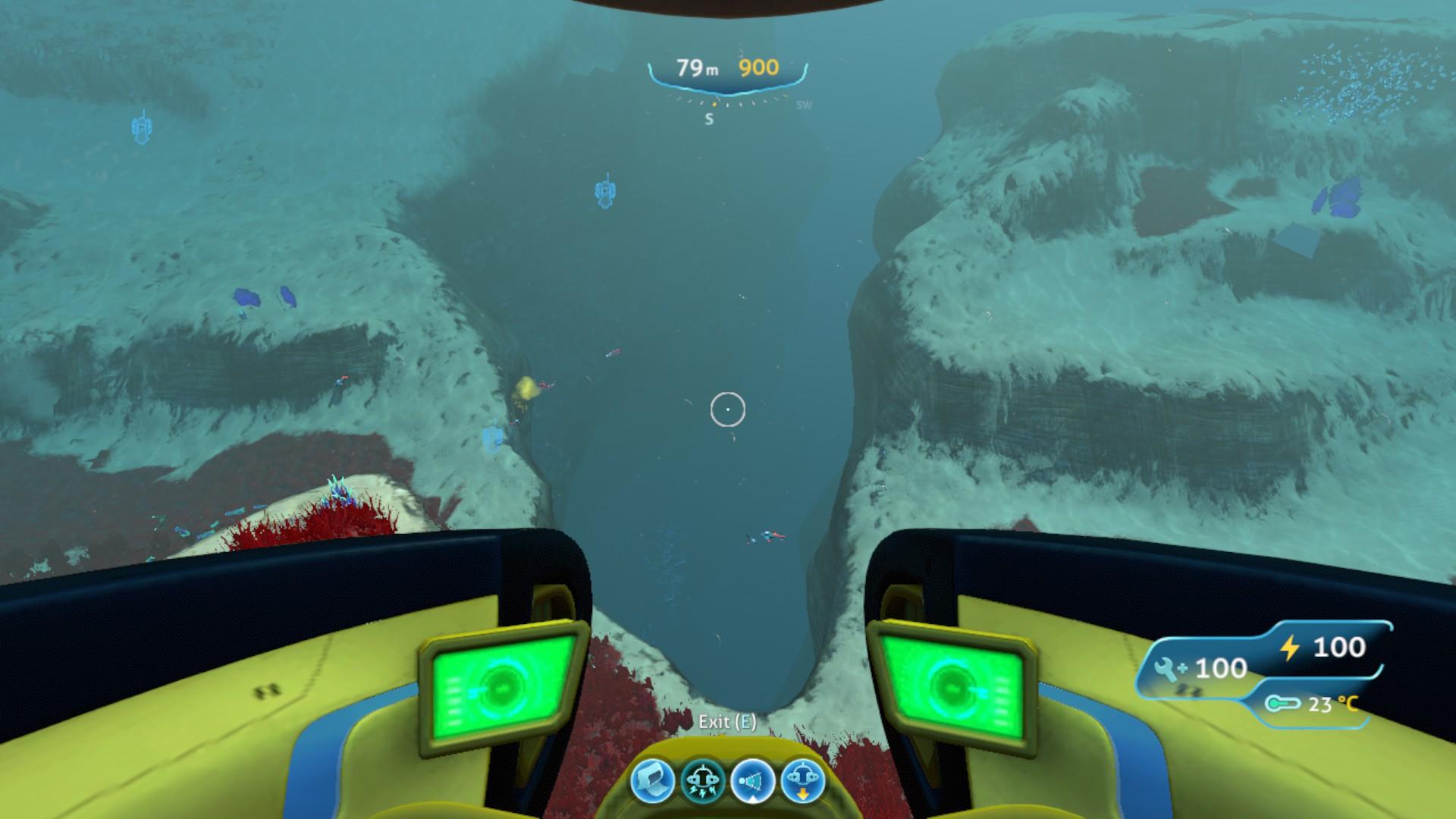Subnautica is an unconventional mystery/exploration/survival game where the open world is, in and of itself, a puzzle. The developers present the player with a dangerous, sprawling – and at times quite inaccessible – watery domain which contains a greater degree of clues and valuable loot as one goes deeper into the abyss. The player’s ingenuity is thoroughly tested should they seek a fuller understanding of the game’s mysteries, as the most important clues are not only kilometers underwater, but are tucked away in the depths of caves inhabited by vicious creatures. The player must use every tool and resource available to surmount the challenges of this inhospitable environment, which entails expensive technology and extensive knowledge of the seafloor as well as creature behaviors. Further, the main gameplay loop of exploration and resource extraction facilitates the telling of Subnautica’s main narrative in a compelling manner, by harnessing the player’s curiosity to propel them forward and into the unknown.
The main narrative of Subnautica is woven into the “mystery” of the game in the sense that the world itself is one substantial mystery, which only unravels through the player’s tracking-down and analysis of voice logs, lost texts, abandoned bases, alien ruins, and scattered wreckage from the ship that crash-landed with the player on board. The main mechanic of the game is exploration for the sake of finding salvage with which to make more useful and ever more sophisticated technology, for use in going deeper underwater and for safely dealing with the game’s deadly creatures. Even though most players would initially explore for the sake of survival – and not necessarily out of curiosity for the embedded narrative – through this exploration the player quickly becomes intrigued by the main story, as it doesn’t take long for the player to start uncovering alien ruins. Not long after beginning the game (~3-4hrs) does it become apparent that an alien race established a quarantine on the planet to prevent a mysterious disease from spreading throughout the cosmos, which is precisely why the player’s ship was blown to bits. From the perspective of a game designer, this is a thoroughly compelling manner with which to tell a narrative – instead of force-feeding the player a narrative through unskippable cutscenes or exposition dumps, the game harnesses the player’s craving for resources to make them explore the world and uncover clues in an organic, engaging fashion. Then, once the player is hooked by this mystery, they are driven by their desire to uncover the full picture (as well as a thirst for better loot) which takes them to the elusive deep in pursuit of clues.
The clues which are crucial to solving Subnautica’s mysteries are scattered throughout the world and at depths anywhere from above water to ~2 km deep, which prevents the player from dashing through the story as a significant amount of preparation is required to dive that far underwater. From a design perspective this is quite brilliant, as the player is forced to slow down and savor the world, and is further forced to put themselves in grave danger should they ever hope to see the story’s conclusion. Subnautica thus caters effectively to both story-driven players as well as resource gatherers/survivors at the same time, integrating the embedded narrative within the core gameplay loop in such a way that even players who are initially totally uninterested in the story can become engrossed in it by merely trying to survive. Apart from some minor bugs (sometimes the player model becomes stuck on geometry) Subnautica really doesn’t do anything wrong, although some designers might have chosen to do key things differently – for example, the whereabouts of certain critical locations for furthering the narrative can sometimes be quite obtuse. The game does a mostly satisfactory job of luring the player to these locales by placing markers in roughly the same spot – i.e., sending out an emergency signal from a lifepod that happened to fall next to an entrance to the “lost river”, a cave system which contains an ancient alien experimentation facility. Players must therefore rely on their own curiosity to drive them to explore these secluded spaces for the sake of unraveling the game’s mysteries, which may be too much to ask of some players who’d rather look up important locations than bumble around in the dark, dangerous depths. The featured image for this post is one such example of an entrance to the lost river – quite dark, certainly dangerous, and truly hair-raising to venture into for the first time. I loved the sheer obscurity of these locations and the clues within, and felt like I had truly uncovered ancient ruins when I was fortunate enough to stumble upon them – although finding these narrow entrances and tiny clues within such a vast open world did feel quite tedious at times!




